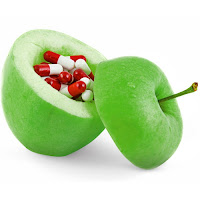Nine Healthiest (and easiest) Vegetables that You Need in Your Prairie Garden
1. Radish
The radish is one of the easiest vegetables to grow in your garden.
It thrives in all climates, all year round in temperate zones. The radish mature quickly, from seed to eating in as little as 4 or 5 weeks and rarely have any pest or disease problems.
Radishes have a history of being effective when used for liver disorders.
They contain a variety of sulfur-based chemicals that increase the flow of bile.
Helping to maintain a healthy gallbladder and liver, and improve digestion.
Radishes also contain a large number of cancer-protective properties.
All variety of radishes are an excellent source of vitamin c with the leaves containing almost six times the vitamin C content of their root, as well as being a good source of calcium.
2. Leafy Greens: Kale, Spinach, Swiss chard, Lettuces
Kale is wonderful in the prairie garden as it is not fussy about soil conditions and very rarely troubled by pests.
It is tolerant of both heat and frost and has been harvested in the snow.
Kale is a vegetable that has reached superfood status because of its nutrient qualities including vitamin C, A, K and very high amounts of calcium.
It has strong anti-inflammatory properties, is known to be effective against cancers, and strengthens cardiovascular health.
Spinach is easy to grow and thrives in cooler temperatures.
It is one of the few leafy greens that tolerate partial shade.
However, it must be watered well during hot spells.
Low in calories and high in vitamins, spinach is one of the most nutrient-dense foods in existence.
One cup of this vegetable contains far more than your daily requirements of vitamin K and vitamin A, almost all the manganese and folic acid your body needs and nearly 40 percent of your magnesium requirement.
It is a good, very good or excellent source of more than 20 different measurable nutrients, including dietary fiber, calcium and is 40% protein.
Spinach contains more than a dozen individual flavonoid compounds, which work together as cancer-fighting antioxidants.
It has also been shown to help fend off macular degeneration, a major cause of blindness in older people.
Swiss Chard is also relatively problem free to grow and matures early. As with the others, it is very high in antioxidants and nutrients while being low in calories. Swiss chard has had very positive affect on colon
cancers.
Lettuce Greens generally get more nutrient dense as they get darker.
Romain lettuce is the most nutrient rich lettuce and is an excellent source of vitamin A, folic acid, vitamin C, B1, B2 and minerals chromium and manganese.
3. Peppers and Chillies
These plants are also related to each other and enjoy the same growing conditions.
They are a warmer climate vegetable, but do well in Manitoba if transplanted after the risk of frost is past. They need 8 hours of sun a day but grow well in a pot against a south-facing wall.
Peppers are packed with several nutrients. They are a good source of vitamin C, thiamine, vitamin B6, beta-carotene, and folic acid.
Also, they contain a large amount of phytochemicals that have exceptional
antioxidant activity.
Red bell peppers also contain lycopene, which helps to protect against cancer and heart disease.
Bell peppers have been shown to be protective against cataracts.
Peppers have also been shown to prevent blood clot formation and reduce the risk of heart attacks and strokes.
Red chillies have the most vitamin A, and all chillie peppers provide fiber, potassium, folic acid, and iron.
Capsaicin, only found in hot peppers, is the active ingredient that gets the most recognition.
This is the pepper ingredient acknowledged for raising endorphin levels and improving mood.
Capsaicin, is a vasodilator, meaning it causes blood vessels to widen. This enhances circulation and increases body temperature, which then raises metabolism. This effect also reduces body fat accumulation.
The capsaicin reduces pain by depleting a chemical that transmits pain signals to the brain.
Because of this, capsaicin can be found in many topical pain relieving creams
You can harvest capsicum at any time, but if you wait for the fruit to turn red (they all start out green) they have much higher amounts of vitamin C. If you want to dry some just leave them in a dark, dry, airy
place for several weeks. They will store well in glass jars for many years. Remember to wash your hands thoroughly and never touch your eyes after handling chillies.
4. Beets
Beets are very simple to grow, and are one more superfood you should be including in you diet.
Famous for their ability to cleanse the blood, beets contain calcium, sulfur, iron, vitamin C, vitamin B, magnesium, copper and phosphorus. They are high in minerals which are the building blocks for cells,
strengthen the liver and gall bladder, the lymphatic system.
Beets contain a wealth of fiber -- half soluble and half insoluble.
Both types play roles in fighting fat. These colorful root vegetables contain powerful nutrient compounds that help protect against heart disease,osteoporosis, birth defects and certain cancers, especially stomach
and colon cancer.
Don’t waste any of your beets this summer. The beet greens are even richer in nutritional content than the beetroot containing higher amounts of potassium, calcium, iron, vitamin C and A.
5. Tomato
Tomatoes are perhaps the most popular vegetable for the home gardener. Even those who don’t usually plant a garden have a tomato plant or two in a pot on the porch or tucked in the flowerbed.
One of the most well-known tomato benefit is its abundant Lycopene. Lycopene is a vital anti-oxidant that helps in the fight against cancerous cell formation as well as other kinds of health complications and diseases.
Cancers such as prostate cancer, cervical cancer, colon cancer, rectal cancer, and cancers of the stomach, mouth, pharynx, bladder and esophagus have all been proven to be staved off by high levels of Lycopene.
Tomatoes contain a lot of vitamins A and C. Nutrients in tomatoes have been known to help diabetics to keep their blood sugar level under control, improve eyesight, lower blood pressure and cholesterol levels. Tomatoes have been shown lessen the risk of gallstones and kidney stones and contribute to healthy bones, skin and hair.
6. Asparagus
Asparagus is ideal for prairie gardens as it does best in cool, northern climates. Virtually labor free, it grows as a perennial, reproducing every year, and producing a harvest early in the spring.
Asparagus provides a truly unique combination of anti-inflammatory nutrients. These anti-inflammatory nutrients have been noted to have positive effects on arthritis, rheumatism, and ALS, also known as "Lou Gehrig's Disease."
Asparagus provides a wide variety of antioxidant nutrients, including vitamin C, beta-carotene, and the minerals zinc, manganese, and selenium It is is rich in protein but low in calories and carbohydrates. It is an excellent source of potassium, folic acid, vitamins A, C and K, and traces of vitamin B complex.
A good source of dietary fiber, asparagus is also rich in niacin, phosphorus and very low sodium and has the ideal calcium and magnesium balance of 2:1. The high alkalinity of vegetable is effective in reducing the acidity of the blood and helps cleanses the tissues and muscles of waste, break up kidney stones and regulate blood sugar.
7. Onions and Garlic
Both onions and garlic are simple crops for the prairie gardener, easy to grow and typically trouble free. They take up little space and can easily be tucked in a sunny spot.
The health benefits of these flavor favorites are endless because of their powerful anti-septic and anti-bacterial properties.
Both garlic and onions help to protect against cardiovascular disease, respiratory concerns, diabetes, and a variety of cancers.
Garlic produces cells in the blood that are deemed "natural killers" and help to fight off many different kinds of infections as well as tumors. Garlic lowers blood pressure and it decreases the risk of blood clots, which contribute to many strokes and heart attacks.
Garlic is best eaten in its raw state and medicinal properties are at their height when garlic is cut up, sliced up or chopped. Cooking garlic, especially for too long or at high temperatures is responsible for destroying some of the healing compound known as "allicin".
Onions, like garlic, help to increase the HDL cholesterol in the blood.
Onions also help to decrease the bad cholesterol or LDL in the blood and increase the ability of the blood to dissolve blood clots.
Onions lower blood sugars and prevent spasms of the bronchial tube associated with asthma.
Onions decrease the risk of many different types of cancers. A compound known as quercetin, in onions, is extremely powerful when it comes to fighting cancer.
Garlic and onions are also good source of the antioxidants beta-carotene and vitamin C, vitamins B, potassium and selenium.
8. Cucumbers and Zucchini
Prolific and mass-producing, Cucumbers and zucchini never fail to perform.
However, to be warned they do require a lot of room to weave their magic.
Fresh cucumbers are mostly composed of water, however they still pack a lot of nutrition.
The flesh of cucumbers is a very good source of vitamins A, C, and folic acid.
The hard skin is rich in fiber and a variety of little heard of, but necessary minerals including magnesium, molybdenum, and potassium.
Cucumber is an excellent source of silica, which is a trace mineral that contributes to the strength of our connective tissue.
Zucchini, also high in water- 95%, is also has high levels of potassium, carotenes, and vitamin C.
It also appears that the anti-cancer effect of the simple zucchini rival many of the more popular cancer fighters.
As many people are suffering for dehydration on a cellular level and don’t even know it, an increase in both cucumbers and zucchini should be a very welcomed addition to the dinner table.
9. Broccoli
Although vulnerable to insects and cutworms, I’ve included broccoli as an easy produce to grow in Manitoba, because if I could grow it, anyone can! Broccoli plants are quite hearty; withstanding light frost and prefers cooler weather.
Broccoli tends to "bolt" in hot Manitoba weather, which means that it flowers, blooms and goes to seed too early.
The best way to prevent broccoli flowers from happening too early is to keep the soil the broccoli is planted in cool with a heavy mulch and frequent watering.
Also planting the vegetable out of the direct sun, perhaps beside a taller crop, may prevent bolting and keep the ground cool.
Broccoli is a cut and come again vegetable.
Meaning that when you cut the main head, other smaller heads will grow.
Good news is that these side heads will take a little longer to bolt and flower.
But broccoli is definitely deserving of that extra attention in the garden. Because of its goldmine of qualities it is being called a true miracle food.
Ounce for ounce, boiled broccoli has more vitamin C than an orange and as much calcium as a glass of milk, according to the USDAs nutrient database. One medium spear has three times more fiber than a slice of wheat bran bread. Broccoli is also one of the richest sources of vitamin A of all produce.
Broccoli is also proving to be a natural wonder-drug for many types of cancer, including breast cancer, cancer of uterus, prostrate cancer, cancers of internal organs like lungs, colon, liver, kidneys and cancer of intestines.
But it is particularly good for breast cancer and uterus cancer, as it removes extra estrogen from the body.










